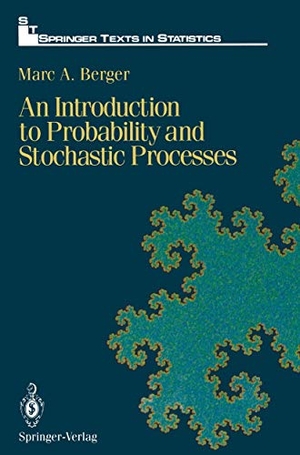Für statistische Zwecke und um bestmögliche Funktionalität zu bieten, speichert diese Website Cookies auf Ihrem Gerät. Das Speichern von Cookies kann in den Browser-Einstellungen deaktiviert werden. Wenn Sie die Website weiter nutzen, stimmen Sie der Verwendung von Cookies zu.
Cookie akzeptieren
Marc A. Berger
An Introduction to Probability and Stochastic Processes
- Springer New York
- 2011
- Taschenbuch
- 236 Seiten
- ISBN 9781461276432
These notes were written as a result of my having taught a "nonmeasure theoretic" course in probability and stochastic processes a few times at the Weizmann Institute in Israel. I have tried to follow two principles. The first is to prove things "probabilistically" whenever possible without recourse to other branches of mathematics and in a notation that is as "probabilistic" as possible. Thus, for example, the asymptotics of pn for large n, where P is a stochastic matrix, is developed in Section V by using passage probabilities and hitting times rather than, say, pulling in Perron Frobenius theory or spectral analysis. Similarly in Section II the joint
Mehr
Weniger
zzgl. Versand
in Kürze